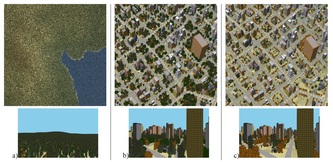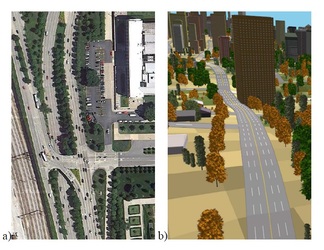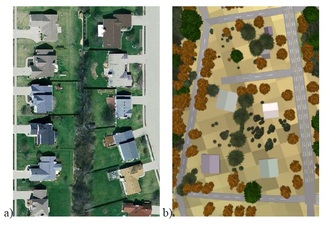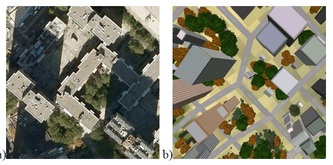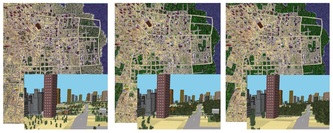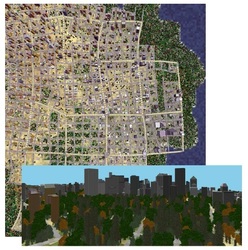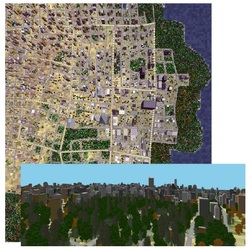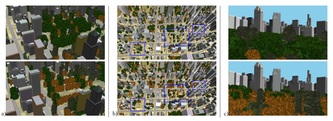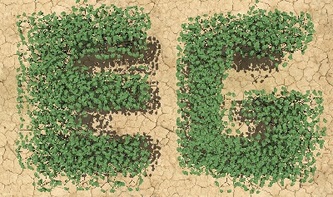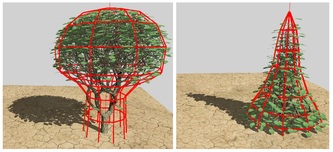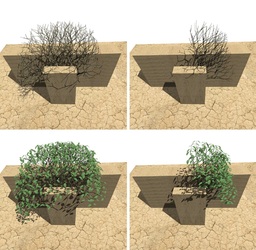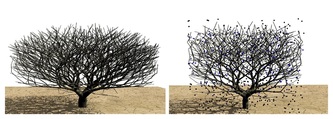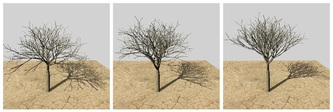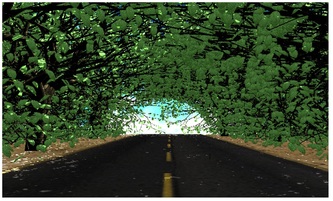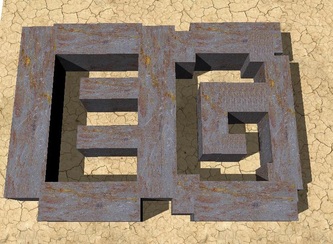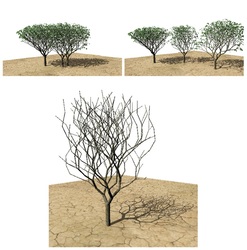Urban Ecosystem
Urban Ecosystem DesignAbstract. We address the open problem of spatial distribution of vegetation in urban environments by introducing a user-guided simulation and procedural system for integrating plants into the interactive design process of 3D urban models. Our approach uses as input 3D geometry of an urban layout from which it infers initial conditions and parameters of procedural rules. A level of manageability is calculated for each area of the urban space. The manageability level defines the amount of influence between the wild ecosystem simulation, where the plants compete for resources and seed freely, and the managed ecosystem, where nearly no seeding is allowed and the plants grow only under well-defined conditions. The wild ecosystems are handled by a simulation of plant competition for resources, whereas the procedural generation is based on an expandable set of behavioral rules of owners and typical plant management. Our system provides an interactive semi-automatic method to calculate a spatial plant distribution and to create an urban model with plants covering an area of several square kilometers in less than a minute. It provides a high degree of controllability and works tightly with an urban simulation system. We show various examples, such as plant development over time in managed and unmanaged areas, effect of procedural rules on the plant distribution, and the effect of changing the level of manageability and the plant distribution.
|
Interactive Modeling of Virtual Ecosystems
Abstract. We present a novel technique for interactive, intuitive, and efficient modeling of virtual plants and plant ecosystems. Our approach is biologically-based, but shades the user from overwhelming input parameters by simplifying them to intuitive controls. Users are able to create scenes that are populated by virtual plants. Plants communicate actively with the environment and attempt to generate an optimal spatial distribution that dynamically adapts to neighboring plants, to user defined obstacles, light, and gravity. We demonstrate simulations of ecosystems composed of up to 140 trees that are computed in less than two minutes. Various phenomena previously available for non-realtime procedural approaches are created interactively, such as plants competing for space, topiary, plant lighting, virtual forests, etc. Results are aimed at architectural modeling, the entertainment industry, and everywhere that quick and fast creation of believable biological plant models is necessary.
|
